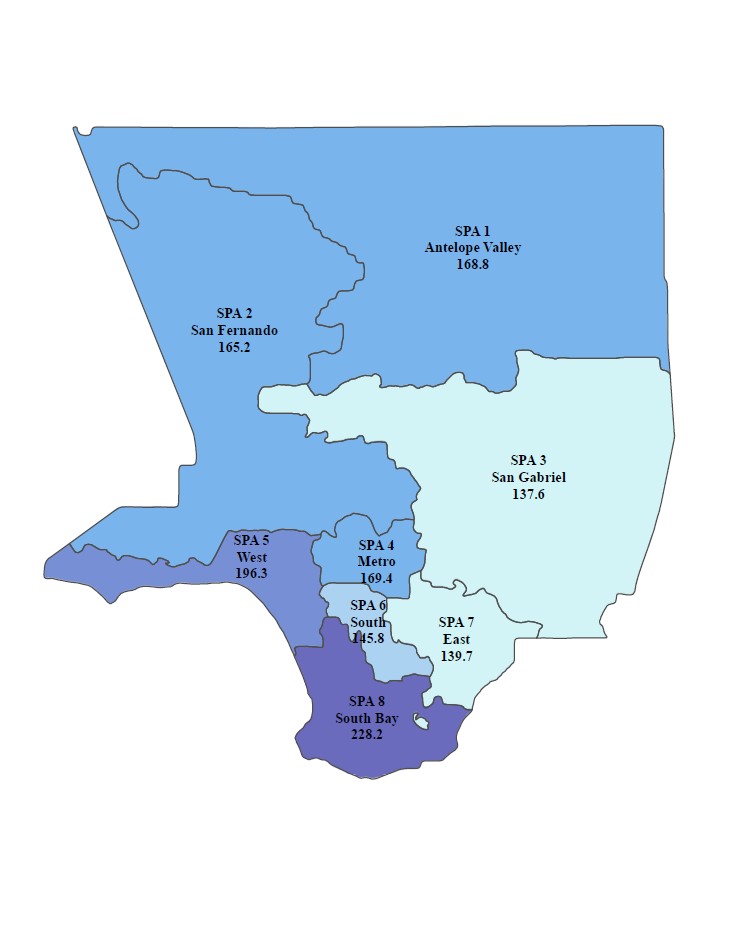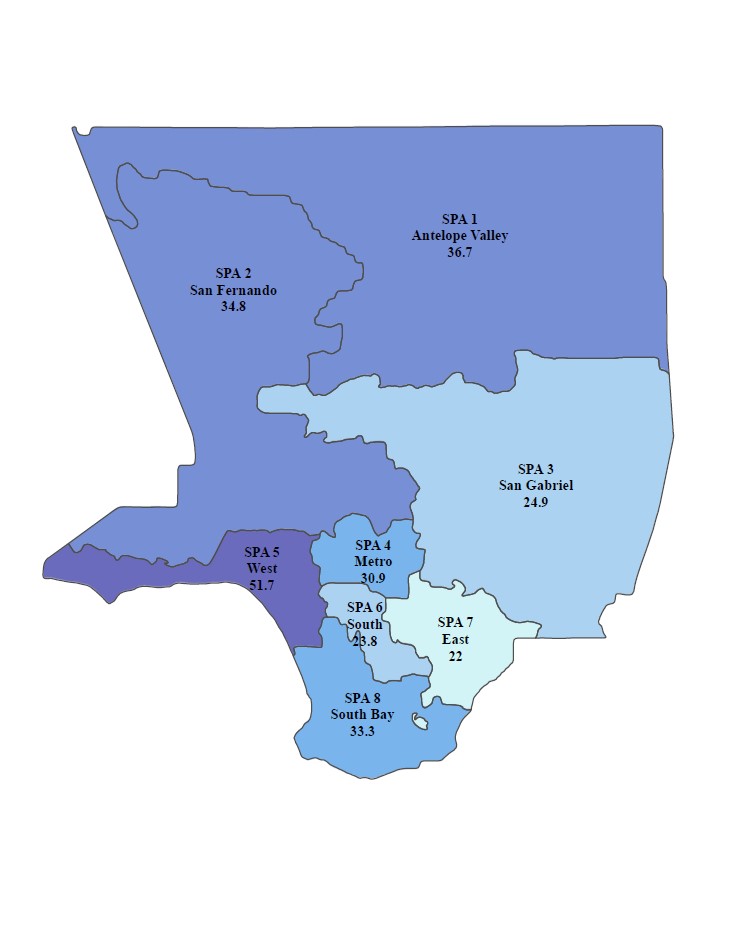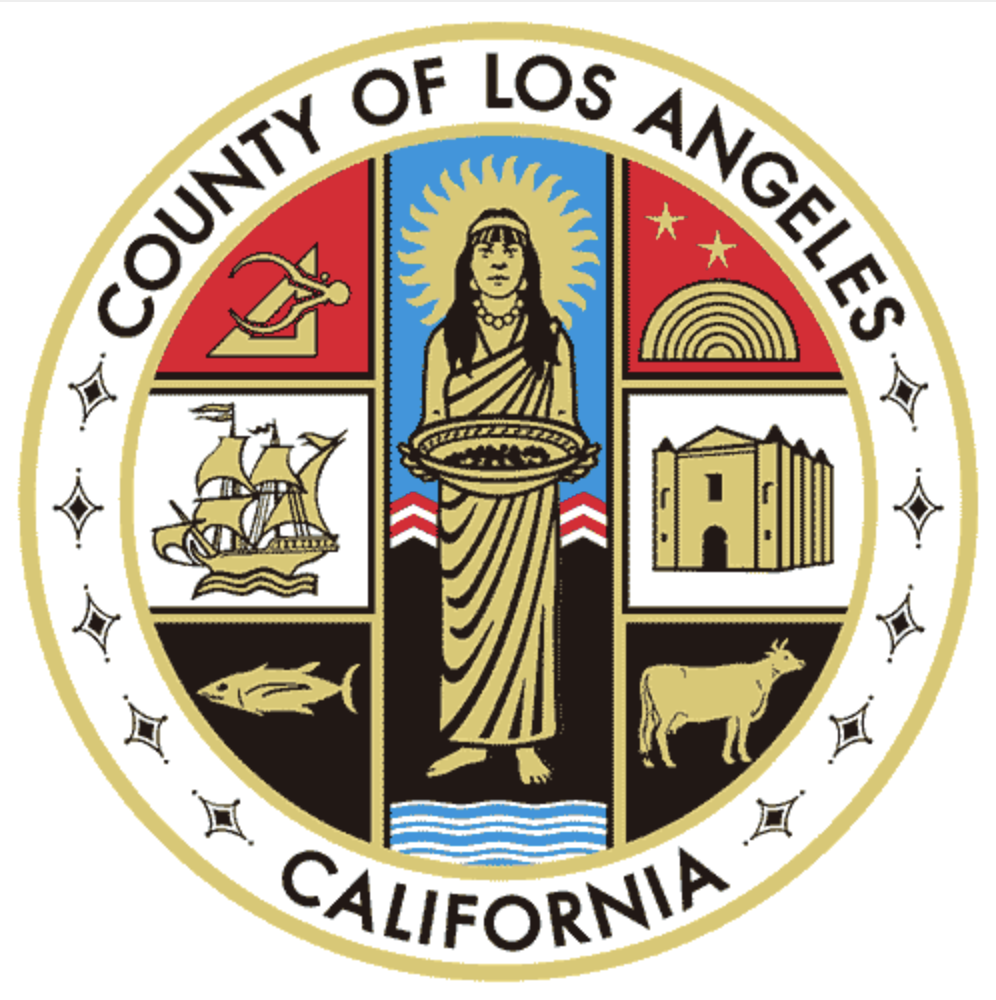Hospitalizations
Opioid Hospitalizations in Los Angeles County
According to HCAI data (formerly OSHPD), there were a total of 249,580 opioid hospitalizations in LAC from 2005-2021 that listed opioids as a diagnosis (abuse, dependence, use, or poisoning) or external-cause-of-injury. Opioid-related hospitalizations increased by 49% from 11,209 in 2005 to 16,663 in 2021 (Figure 1).
About 15% of opioid-related hospitalizations listed opioids as the the principal diagnosis or principal external-cause-of-injury between 2005-2021. Primary opioid hospitalizations increased by 117% from 1,415 in 2013 to 3,068 in 2021 (Figure 3).
Among hospitalizations for poisoning that specified opioid type, prescription (Rx) opioids (includes natural/semi-synthetic opioids, methadone, and synthetic opioids) were the most frequently reported opioid type between 2016 and 2021 for both any mention and primary hospitalizations (Figures 2, 4).
Synthetic opioid poisoning hospitalizations increased consistently since 2018. Heroin poisoning hospitalizations increased from 2006, peaking in 2018, then declined for both any mention and primary hospitalizations (Figures 1, 3).
Opioid Hospitalizations by SPA
The South Bay region (SPA 8) had the highest rate of all opioid-related hospitalizations. The West region (SPA 5) had the highest rate of all primary opioid-related hospitalizations in 2021 (Figure 5).
The Antelope Valley region (SPA 1) had the highest rates of heroin-, synthetic opioid-, and fentanyl-related poisoning hospitalizations in 2021. Rates for natural/semi-synthetic-related poisoning hospitalizations were highest in the South Bay (SPA 8) region in 2021. Similar patterns were seen for primary heroin, natural/semi-synthetic, synthetic opioid, and fentanyl poisoning hospitalizations (Figure 5).
Figure 5. Opioid hospitalizations per 100,000 population by SPA, opioid type, and diagnosis type, LAC, 2021
Source: HCAI
Instructions:
Make a selection at the top of the maps to compare hospitalization rates by SPA, opioid type, and diagnosis type.
- Any Mention All Opioids
- Any Mention Heroin
- Any Mention Rx Opioids
- Any Mention Natural/Semi-synthetic
- Any Mention Synthetic
- Any Mention Fentanyl
- Primary All Opioids
- Primary Heroin
- Primary Rx Opioids
- Primary Natural/Semi-synthetic
- Primary Synthetic
- Primary Fentanyl

Any Mention All Opioids
- Primary All Opioids
- Primary Heroin
- Primary Rx Opioids
- Primary Natural/Semi-synthetic
- Primary Synthetic
- Primary Fentanyl
- Any Mention All Opioids
- Any Mention Heroin
- Any Mention Rx Opioids
- Any Mention Natural/Semi-synthetic
- Any Mention Synthetic
- Any Mention Fentanyl

Primary All Opioids
Demographics
In 2016-2021, opioid-related hospitalizations increased with age up to age 45-54 years, then decreased.
Prescription opioid and natural/semi-synthetic opioid poisoning hospitalizations increased with age, with older adults aged 65+ accounting for the largest proportion, for both any mention and primary diagnosis types in 2016-2021 (Figures 6-7).
For heroin and fentanyl poisoning, young adults aged 26-34 years accounted for the highest proportion among all age groups, for both any mention and primary diagnosis types in 2016-2021 (Figures 6-7).
In terms of trends, among those aged 26-34 years, primary opioid hospitalizations increased significantly since 2014. Primary heroin poisoning hospitalizations peaked in 2018 before declining consistently, while primary synthetic opioid poisoning hospitalizations continued to increase since 2016 for those aged 26-34 years (Figures 8-9).
From 2016-2021, there were slightly more males than females among opioid-related hospitalizations (males 53%, females 47%), but the gender distribution differed by opioid type.
Males accounted for a large majority of heroin- (75%) and fentanyl-related (76%) poisoning hospitalizations, while females comprised the majority of natural/semi-synthetic-related poisoning hospitalizations (57%) (Figure 10).
Males had consistent increases in synthetic opioid-related poisoning hospitalizations starting in 2017, surpassing females in 2020 (Figure 12).
Among primary opioid hospitalizations, males had a larger majority for hospitalizations for all opioids (67%), and also across all opioid poisoning types (Figure 11).
Over recent years, primary opioid, and natural/semi-synthetic opioids, synthetic opioids, and fentanyl poisoning hospitalizations have been increasing among males, while primary opioid hospitalizations fluctuated around similar levels among females (Figure 13).
Whites accounted for the largest proportion of opioid-related hospitalizations and for all opioid poisoning types in 2016-2021, except fentanyl. Latinxs accounted for the the largest proportion of fentanyl-related poisoning hospitalizations, and the second largest for opioid-related and all other opioid poisoning types after Whites (Figure 14).
Patterns were similar to opioid-related hospitalizations for primary opioid and for primary opioid poisoning hospitalizations of all opioid types (Figure 15).
In terms of trends, primary opioid hospitalizations among Latinxs increased 113% since 2016. Heroin poisoning hospitalizations decreased significantly since 2018 among Whites while that for other race/ethnic groups decreased slightly or remained constant (Figures 16-17).
Neonatal Abstinence Syndrome
Neonatal abstinence syndrome (NAS), or drug withdrawal symptoms in newborns, can occur if the mother uses opioids during pregnancy.
Newborns hospitalized with NAS increased 172% from 82 in 2008 to 223 in 2017, then fluctuated between 158 and 183 hospitalizations through 2021 (Figure 18).
Economic Burden of Opioids
From 2012-2021, patients hospitalized for opioid-related conditions stayed in the hospital for an average of 6.3 days, and accounted for 1,072,996 total hospital days.
The mean hospital charge for each opioid-related hospitalization in LAC was $93,370, increasing from $57,323 in 2012 to $120,509 in 2021.
The annual opioid-related hospital spending increased from $780 million in 2012 to $2.0 billion in 2021, and resulted in a total of $15.9 billion in total spending during the period (Figure 19).
Mean length of stay: 6.3 days
Total hospital days: 1,072,996
Mean hospital charge: $93,370
Total hospital spending: $15.9 billion
Notes: Hospitalizations for less than 1 day were counted as having a length of stay of 1 day. All costs were adjusted for inflation to 2022 US dollars.
References
Figures 1-19. Department of Health Care Access and Information (HCAI, formally OSHPD). Nonpublic Inpatient Discharge and Emergency Department data, 2005-2021. California Department of Public Health. Note: Based on diagnoses and external-cause of injury listing any ICD code for opioid abuse, dependence, use, or poisoning. ICD codes for all intents and encounters were included, “in remission” were excluded.


